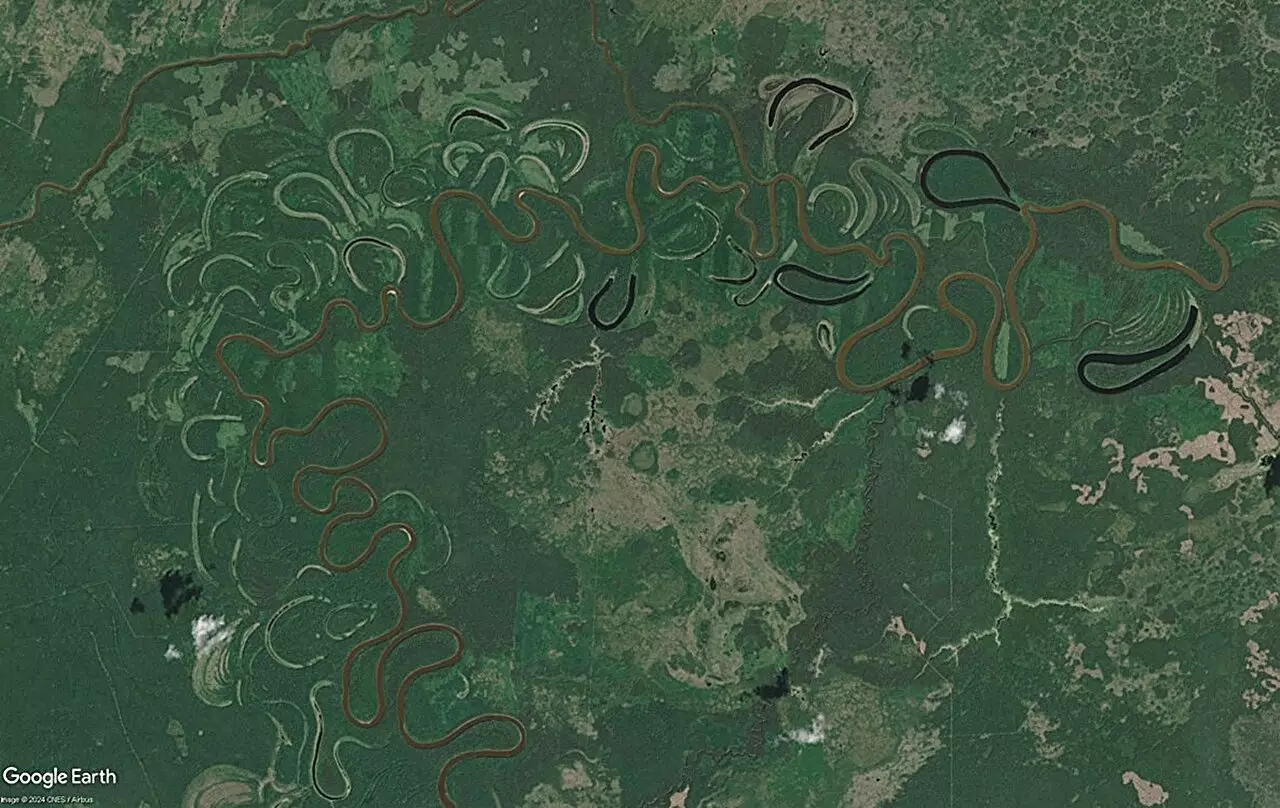Rivers are often associated with traditional ecological studies, where the examination primarily hinges on vegetation types and sediment analysis. These methods have served as foundational approaches for understanding river systems but have limitations that leave considerable gaps in our comprehensive understanding. Riccardo Maitan, a rapidly advancing Ph.D. candidate at the University of Padova, is spearheading a paradigm shift by tackling the complexities of river morphology through hydrological behaviors and morphodynamics instead. His groundbreaking research, rooted in an amalgamation of historical data—including a meticulous study of over 15 years of data from the United States Geological Survey (USGS) and an analysis of Google Earth imagery—explores how peak discharge variability serves as a critical measure in understanding the dynamics of meandering rivers.
The Role of Bend Cutoffs in River Evolution
Central to Maitan’s study is the concept of cutoff types and their implications on river morphology. In historical contexts, bend cutoffs have been recognized for their role in shaping river pathways, but understanding their implications on a broader ecological scale is where Maitan’s work diverges from past approaches. Rivers, particularly those on alluvial plains, can experience neck and chute cutoffs that distinctly alter their geometric properties. For example, the Purus River exemplifies a neck cutoff regime marked by its gradual evolution through breaches of narrow land bridges between bends. In contrast, the Powder River serves as a prime example of a chute cutoff regime, illustrating a more abrupt change where the river slices through its own sediment deposits.
The Impact of Hydrological Variability
What drives such cutoff phenomena? Maitan’s investigation explores a complex interplay of environmental factors such as climate conditions and vegetation cover, ultimately concluding that the variability in overbank discharge emerges as a decisive factor. This understanding transforms conventional wisdom surrounding river dynamics and opens a doorway to predicting how external influences, particularly human activities, might be reshaping these ecosystems. The contrasting nature of neck and chute cutoffs highlights how rivers manage flood events; while one promotes stability, the other encourages rapid change.
Paleohydrologic Reconstruction and Its Implications
One of the striking outcomes of Maitan’s research is the innovative approach to paleohydrologic reconstruction. By analyzing the traces left behind by oxbow lakes and the morphology of the floodplain, researchers can glean insights into historical hydrological conditions. This method provides a unique window into not only current ecosystem health but also the historical context that shapes present-day river characteristics. It emphasizes the importance of understanding long-term changes in hydrology to develop effective conservation and management strategies.
Human Influences on River Dynamics
As illuminating as Maitan’s research is about natural processes, it also raises critical alarms about anthropogenic impacts on river ecosystems. The widespread practice of damming rivers, often justified as a method to mitigate flood risks, can inadvertently shift river dynamics in profound ways. Maitan argues that such interventions may lead to a transition from chute to neck cutoff regimes, necessitating a re-examination of how flood control measures can disturb natural river patterns. The consequences are not merely topographical; they can drastically alter sediment residence time, thus affecting crucial processes like carbon flux on floodplains.
Looking Ahead: A New Paradigm for River Management
Ultimately, Maitan’s work challenges us to reconsider how we manage and interact with our river systems. The revealed connections between hydrological variability and cutoff regimes present an urgent call to action for environmental scientists and policymakers alike. This research does not just expand our academic knowledge but also serves as a catalyst for redefining conservation strategies to preserve these critical ecosystems for future generations. Understanding river dynamics through the lens of hydrology invites a holistic approach to river management, emphasizing the interconnections between natural systems and human interactions. The revelations from Maitan’s research pave the way for a future where we become better stewards of our vital waterways.


Leave a Reply